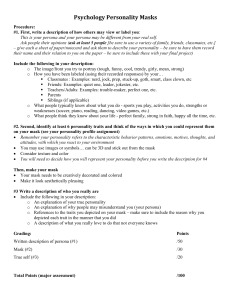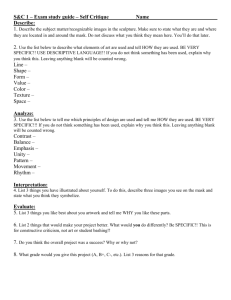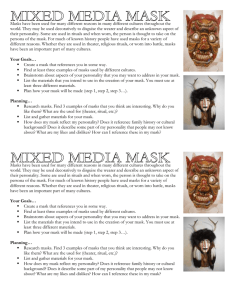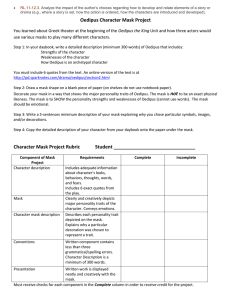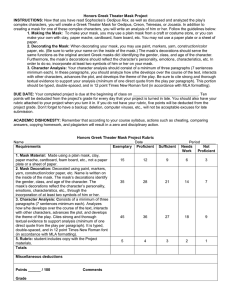File
advertisement
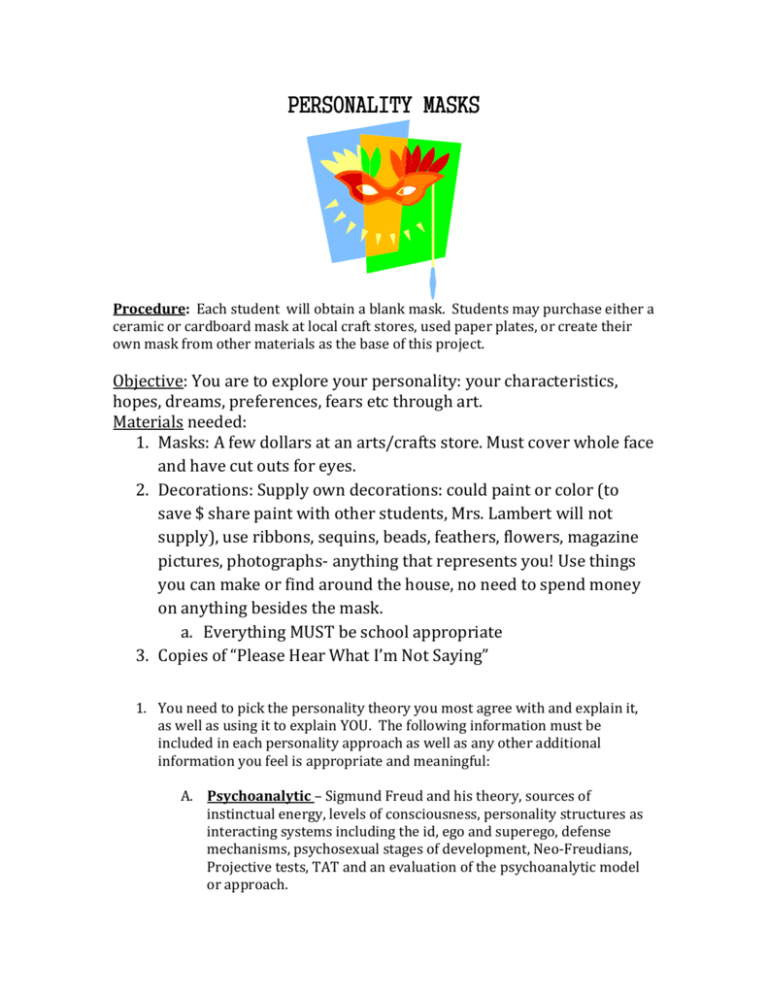
PERSONALITY MASKS Procedure: Each student will obtain a blank mask. Students may purchase either a ceramic or cardboard mask at local craft stores, used paper plates, or create their own mask from other materials as the base of this project. Objective: You are to explore your personality: your characteristics, hopes, dreams, preferences, fears etc through art. Materials needed: 1. Masks: A few dollars at an arts/crafts store. Must cover whole face and have cut outs for eyes. 2. Decorations: Supply own decorations: could paint or color (to save $ share paint with other students, Mrs. Lambert will not supply), use ribbons, sequins, beads, feathers, flowers, magazine pictures, photographs- anything that represents you! Use things you can make or find around the house, no need to spend money on anything besides the mask. a. Everything MUST be school appropriate 3. Copies of “Please Hear What I’m Not Saying” 1. You need to pick the personality theory you most agree with and explain it, as well as using it to explain YOU. The following information must be included in each personality approach as well as any other additional information you feel is appropriate and meaningful: A. Psychoanalytic – Sigmund Freud and his theory, sources of instinctual energy, levels of consciousness, personality structures as interacting systems including the id, ego and superego, defense mechanisms, psychosexual stages of development, Neo-Freudians, Projective tests, TAT and an evaluation of the psychoanalytic model or approach. B. Social Cognitive– Where is this theory derived from?, B.F. Skinner, Julian Rotter’s Expectancy Theory, Albert Bandura’s Social Learning Theory and reciprocal determinism, locus of control Seligman’s learned helplessness theory, and an evaluation of the behavioristic approach. C. Dispositional/Trait – Basic assumptions, personality type theories come from where historically?, Gordon Allport, Raymond Cattell, Hans Eysenck, William Sheldon and body types, factor analysis, how consistent are personality traits over the lifespan?, and evaluating the trait perspective D. Humanistic – Definition and common components, review Abraham Maslow’s theory, Carl Rogers, importance of self-esteem (compare individualistic and collectivistic cultures) and evaluation of this approach. You can type or write up this information on paper or put it on a poster. You will present this evaluation form to me before your group presents. EVALUATION ***The final grade for this project will incorporate a group grade and individual grade as follows: 1. Research Project – Presentation…………………………___/25 pts (Individual grade - you will be graded individually on the following: 2. Research Project – Visual……………………………….___/25 pts 3. Individual Mask Project – External Mask (includes write-up)…___/25pts 4. Individual Mask Project – Inner Mask (includes write-up)……___/25 pts 5. Total Points Earned…………………………………………_____/100pts
